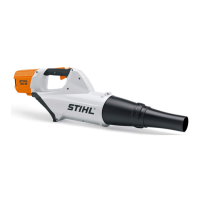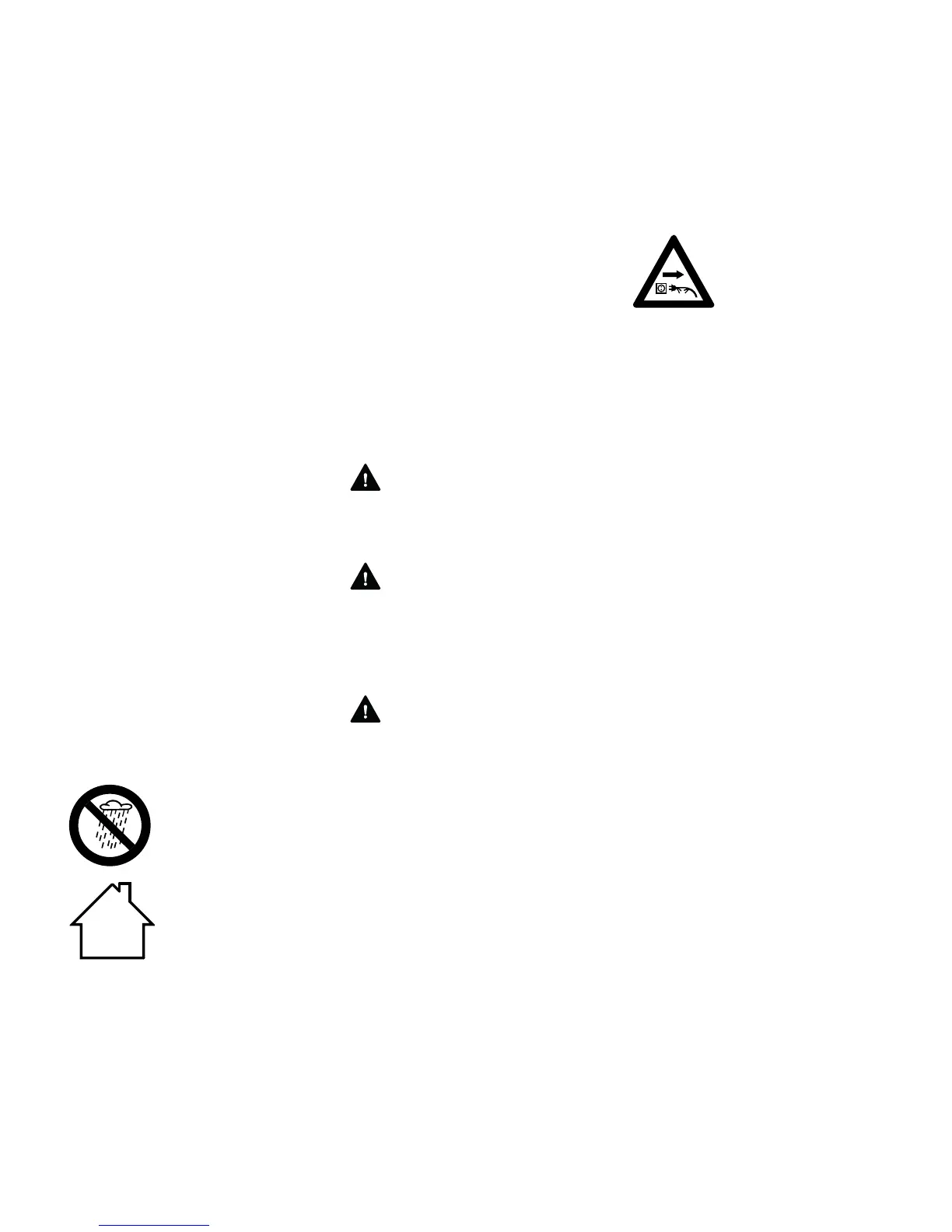BGA 85
English
6
Store the battery out of reach of children
in a cool and dry area away from direct
sunlight and excess heat or cold (14 °F
– 122 °F (-10 °C – +50 °C)).
Charger
Use only original STIHL chargers.
Use only for charging geometrically
matching STIHL batteries with a
maximum capacity of 50 Ah and a
maximum voltage of 42 V.
Never charge defective, leaking or
deformed batteries.
Connect the charger only to a power
supply with the voltage and frequency
specified on the rating plate. Always
connect the charger to a properly
installed wall outlet.
Never use a charger with damaged
housing, damaged power supply cord or
damaged plug. Do not operate the
charger if it has received a sharp blow,
been dropped or otherwise damaged in
any way.
Do not open or dissassemble charger –
there are no user serviceable parts
inside.
Store charger out of the reach of
children.
Operate charger at temperatures
between 41 °F (5 °C) and 104 °F
(40 °C).
Allow the charger to cool down normally
– do not cover it.
Never bridge the contacts of the charger
with metallic objects (e.g. nails, coins,
jewelry) – short circuit. The charger may
be damaged by a short circuit.
In the event of smoke or fire in the
charger, disconnect it from outlet
immediately.
WARNING
To reduce the risk of electric shock or
short circuit, do not insert any objects
into the charger's cooling slots.
WARNING
The charger heats up during the
charging process. Do not operate on an
easily combustible surface (e.g. paper,
texiles) or in an easily combustible
environment – risk of fire.
WARNING
Do not operate in a hazardous location,
i.e. in a location where there are
combustible liquids (fumes), vapors or
dusts. Chargers can produce sparks,
which may ignite the dust or vapors –
risk of explosion.
Never jerk the power supply cord to
disconnect it from the wall outlet. To
unplug, grasp the plug, not the cord.
Have a damaged power supply cord
repaired by an experienced electrician.
Do not use the power supply cord for
any other purpose, e.g. for carrying or
hanging up the charger.
Never use power supply cords that do
not comply with regulations.
Make sure the power supply cord is
located and/or marked so that it will not
be stepped on, tripped over, come in
contact with sharp edges or moving
parts or otherwise be subjected to
damage or stress.
An extension cord should not be used
unless absolutely necessary. If an
extension cord must be used, plug the
charger into a properly wired 16 gauge
(AWG 16) or heavier gauge extension
cord with blades that are the same
number, size and shapes as the blades
on the charger.
To reduce the risk of electric shock:
– Always connect the charger to a
properly installed wall outlet.
– Make sure the insulation of the
power supply cord and plug is in
good condition.
Protect the charger from
rain and dampness. Keep
charger dry.
Use and store charger
only indoors in dry rooms.
Check the charger's
power supply cord and
plug regularly for dam
-
age. If the power supply
cord or plug is damaged,
immediately disconnect
the plug from the wall
outlet to avoid the risk of
electric shock.

